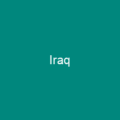Aleppo: A City of Enduring History and Turmoil
Imagine a city that has been continuously inhabited for over 8,000 years—Aleppo is such a place. Nestled in the northwestern part of Syria, this ancient metropolis serves as both a testament to human resilience and a victim of modern conflict. With an estimated population of 2,098,000 residents, Aleppo stands as one of the oldest continuously inhabited cities in the world, its history dating back to around 8,000 BC.
The Ancient Roots
From the sixth millennium BC, Aleppo has been a bustling trading hub between the Mediterranean Sea and Mesopotamia. Its strategic location made it a vital crossroads for commerce and culture. The city’s name, Ḥalab (Ḥalba), first appeared during the Old Babylonian and Old Assyrian Empire period, around 1400 BC.
Struggles and Revivals
Aleppo has seen its fair share of struggles. It was devastated by the Hittites under Mursili I in the 16th century BC and later became part of various empires, including the Assyrians, Neo-Babylonians, Achaemenid Persians, and Romans. Despite these upheavals, Aleppo’s cultural significance remained intact, with its temples and markets continuing to thrive.
The Golden Age
During the 12th century, Aleppo became a major center of trade under the Zengids, who made it their capital in 1128. The city flourished economically and culturally, attracting scholars, merchants, and artisans from across the Middle East.
The Modern Era
As the centuries passed, Aleppo’s fortunes waxed and waned. It was part of the Ottoman Empire until World War I, when it became a center for trade and commerce. The city thrived with European consulates and a vibrant Armenian community, but economic decline in the mid-19th century led to a period of stagnation.
The Syrian Civil War
Then came the Syrian Civil War, which began in 2011. Aleppo was one of the first cities to experience significant fighting. By spring 2013, the city had been divided between government forces and rebels, with both sides suffering heavy casualties.
The Battle for Control
Rebel forces controlled eastern parts of the city while the Syrian Army entrenched itself in western Aleppo. The Old City, a UNESCO World Heritage Site, was particularly affected, with many historic buildings destroyed or damaged during the fighting.
Post-War Reconstruction
The conflict ended in 2016 when government forces regained control of the city. Since then, efforts have been made to rebuild and revitalize Aleppo. However, the city still faces challenges, including ongoing attacks and a struggling economy.
A City Divided
Today, Aleppo is divided into four main districts: Old quarters inside and outside the ancient city walls, modern neighborhoods, informal settlements, and a newly developed area called The New Aleppo. Despite these divisions, the city remains a cultural and economic hub for Syria.
Cultural Heritage
Aleppo’s rich history is reflected in its architecture and landmarks. The Old City, with its narrow alleys and historic buildings, is a living museum of centuries past. Notable sites include the Great Mosque of Aleppo, which dates back to the Umayyad period, and numerous churches and synagogues that have stood for millennia.
Modern Challenges
The city faces modern challenges such as informal settlements, educational needs, and economic development. However, initiatives like the Old City Revival project aim to preserve its heritage while addressing contemporary issues.
A Future of Hope
As Aleppo continues to rebuild, it remains a symbol of resilience and cultural richness. The city’s future is uncertain, but its past serves as a reminder of its enduring spirit and the importance of preserving its history for generations to come.

Aleppo, a city of enduring history and modern challenges, stands as a beacon of resilience. Its past is a testament to human ingenuity and perseverance, while its future remains uncertain but hopeful. As we look towards the next chapter in Aleppo’s story, let us remember the importance of preserving this ancient gem for all to appreciate.
You want to know more about Aleppo?
This page is based on the article Aleppo published in Wikipedia (retrieved on November 29, 2024) and was automatically summarized using artificial intelligence.







